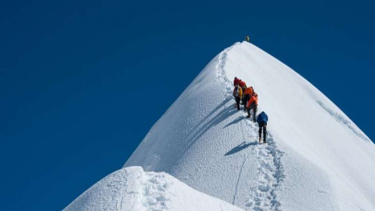Himalayan Glaciers Could Lose 75 Percent of Ice by 2100
- tibettravel.org
Himalayas – Himalayan Glaciers in Asia's Hindu Kush is melting at unprecedented rates and could lose up to 75 percent of their volume by century's end.
Scientists have said warnings of dangerous flooding and water shortages for the nearly two billion people who live downstream of the rivers that originate in the mountain region.
The Hindu Kush is an 800-kilometer mountain range in Central and South Asia west of the Himalayas. It stretches from central and western Afghanistan to northwestern Pakistan and as far southeast as Tajikistan.
The report from the Kathmandu-based International Centre for Integrated Mountain Development (ICIMOD) on Tuesday warned that flash floods and avalanches would grow more likely in coming years if greenhouse gases are not sharply reduced.
“The people living in these mountains who have contributed next to nothing to global warming are at high risk due to climate change,” said Amina Maharjan, a migration specialist and one of the report’s authors.
“Current adaptation efforts are wholly insufficient and we are extremely concerned that without greater support, these communities will be unable to cope,” she said.
Various earlier reports have found that the cryosphere, regions on Earth covered by snow and ice are among the worst affected by climate change.
Puncak Gunung Tertinggi di Himalaya
Recent research found that Mount Everest's glaciers, for example, have lost 2,000 years of ice in just the last 30 years.
“We map out for the first time the linkages between cryosphere change with water, ecosystems, and society in this mountain region,” Maharjan said.
The report found that the Himalayan glaciers disappeared 65 percent faster since 2010 than in the previous decade and said that changes to the glaciers, snow, and permafrost of the region driven by global warming were "unprecedented and largely irreversible".
At 1.5 degrees Celsius or 2 degrees Celsius of warming above preindustrial temperatures, glaciers across the entire region will lose 30 percent to 50 percent of their volume by 2100, it said.
But where glaciers will melt most depends on location. At 3 degrees Celsius of warming glaciers in the Eastern Himalayas, which includes Nepal and Bhutan, will lose up to 75 percent of their ice.
At 4 degrees Celsius of warming, that increases to 80 percent, "We're losing the glaciers, and we're losing them in 100 years," an environmental scientist and ICIMOD fellow who was the lead author of the report, Philippus Wester said.
The Hindu Kush Himalayas stretch for 3,500 km across Afghanistan, Bangladesh, Bhutan, China, India, Myanmar, Nepal, and Pakistan.
Scientists have struggled to assess how climate change is affecting the Hindu Kush Himalayas.
Unlike the European Alps and North American Rocky Mountains, the region does not have a long historical record of field measurements that reveal whether glaciers are growing or shrinking.



























